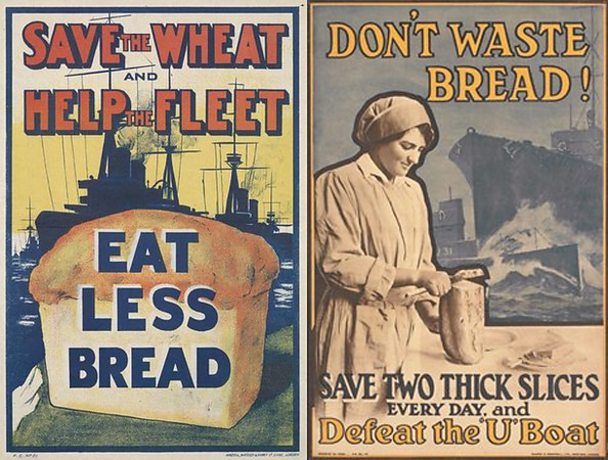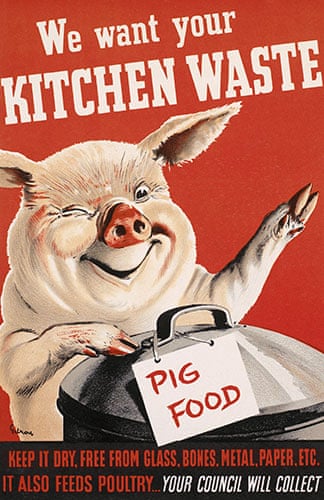Food waste has always been an issue, but back hundreds of years ago, people got inventive. If they were eating animals, they’d be sure to use every part of their furry friend, either as a meal or as clothing from hides, soap from lard, candles from fats and even tools from bones. Any other food that was going to be wasted as a result of overcooking or lack of preserving solutions would be fed to the animals in an effort to convert that into more food.
In the late 18th century, food became cheaper and more convenient to acquire due to industrialization and mass manufacturing of food, along with this people’s attitude towards food changed. With the development of canning food, factories had given the people a way of efficiently keeping stocks of food in their cupboards without the need for a fridge, which was invented in 1899 but would not be popularised until the mid-to-late 1900s with on 2% of households having a fridge in 1948 but 58% of households owning one by 1970. The manufacturing process also passed the obligation of using their waste from the household to the factories with the savvy households owning animals to consume excess food.
This was all about to change with the first and second world wars looming. Food prices were more than double during the war, a lot of the food was sent to feed the soldiers and supplies were being intercepted by German submarines making fresh food hard to find. The government intervened by introducing laws to ration food which forced people back to farming their own vegetables if they had any spare land to do so. With butter, sugar, chocolate, meat and wheat all in very short supply, people had to get inventive when cooking with ingredients like potatoes often getting added to their puddings when baking. There were also posters urging people to eat less bread with men being rationed 1lb of bread in their daily ration and women only 9oz.

By the second world war, the government were fluent in propaganda posters, feeding the population the correct information, not just about the abundant foods that were good for them such as carrots but also what to do with their leftovers. People were also well equipped to deal with wartime after the first world war with women and children helping on farms and farm camps to bring in the harvest across the country.

In the late 1950s, improvements in manufacturing allowed plastics to be produced at a fraction of the cost. This was the start of the sea of plastic which we know in our supermarkets today, whilst some argue this is damaging to the environment, it did substantially reduce the amount of food wasted in supermarkets but now it may be the time to reverse this change as France have just done.
Fast forward to the end of the 20th century and food waste is starting to gain attention from society and the media with the idea of using everything we can out the window and quickly being replaced with the need for the freshest products. This means a lot of waste with “Dumpster diving” and “Freeganism” have taken over after people realised supermarkets were throwing away massive amounts of edible food because nobody bought it and it was past its designated sell-by date. Twenty years later after light has been shed on the issue, the major supermarkets have taken note and are doing great things with their excess waste which primarily include using it for animal food and donating it to charity.
During wartime efforts information was published on the streets in the form of posters, now it is usually brought to you through media, be that on the television, radio, print or the internet. Since the year 2000, the government has launched WRAP (Waste and resources action programme) who are leading the way to inform and motivate people to recycle and make the most out of what they have. They launched the “Recycle Now” campaign in 2004 which has seen the recycling rate go from 11% to 44% as well as their “Love Food Hate Waste” campaign in 2007 which saw food waste being reduced by 21% in five years along with numerous other campaigns promoting sustainable living.
Anaerobic digestion is the best option for recycling food waste and is by no means new technology with basic versions dating back over a hundred years ago but the concept of a collection of household food waste to be better used within society has not been mass government back since the second world war even though households make up 11% of the 31% of food wasted. The most noted use of excess food goes to supermarkets and other distributors who have extra stock which is going out of date who donate this to charities to the people who need it most.
